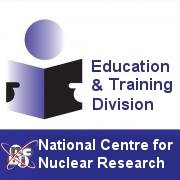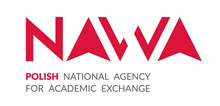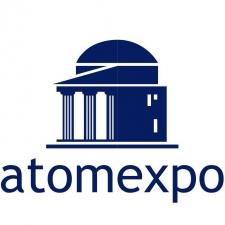NCBJ buys uranium needed to develop the BNCT therapy
2016.05.31 10:58 - adminNCBJ has ordered the TVEL Russian company to deliver uranium plates necessary to conduct research on the boron neutron capture therapy (BNCT). The contract was signed during the ATOMEXPO fair recently held in Moscow.
The contract to deliver 25 uranium plates was signed by Professor K. Kurek, NCBJ Director General, and O. Grigoriev, TVEL Vice-President. The plates are necessary to conduct research on the boron neutron capture (BNCT) therapy in the re-furbished H2 channel of the MARIA research reactor. The therapy is a breakthrough method in treatment of some cancers e.g. brain gliomas.
Due to its unique properties (such as high neutron flux), the MARIA reactor is an excellent facility to conduct innovative research projects – explains Eng. Michał Gryziński, PhD, Head of Mixed Radiation Dosimetry Lab in NCBJ. – The purchased uranium plates will be placed inside a dedicated uranium converter to produce a beam of epithermal neutrons of parameters necessary to study the BNCT therapy. We hope that research will start still this year – initially with the use of thermal neutrons, later next year with the use of epithermal neutrons, more fit for the BNCT therapy.
Within the BNCT therapy, a special chemical compound containing boron atoms is administered to patient. That relatively safe for patient’s health substance accumulates preferentially within tumour tissues. After about 2 hours the patient is treated with a beam of epithermal neutrons for several minutes. Boron atoms easily capture neutrons and in effect decay to a lithium atom and an energetic alpha particle. Range of such alpha particles in living tissue is below typical cells diameters, but energy deposited by them is sufficient to kill the cell in which they are emitted, i.e. tumour cells in that case. That way the BNCT therapy destroys preferentially tumour cells not damaging any surrounding healthy tissues. The therapy was demonstrated effective in treatment of polymorphic gliomas, recurrent neck cancers, colon cancers, malignant melanoma, as well as some other radiation-resistant metastases.
Until recently some reactor was necessary to realize the BNCT therapy. However, currently intensive efforts are under way in several countries (Japan, Argentina, Italy, China, Russia) to develop machine generators capable to deliver necessary neutron beams and small enough to be installed directly in oncology clinics. Two prototypes developed by a consortium established by Mitsubishi and Sumitomo have been tested for some time in university hospitals in Japan. The consortium predicts that the first devices will be commercially offered already next year. Before the BNCT therapy can routinely be applied in hospitals, physicians must get suitable training in research/educational centres located at the few research reactors operated in the world. The MARIA research reactor in Świerk is going join the club soon. Beside offering practical training in application of the BNCT therapy, NCBJ is planning to: conduct research on beams of epithermal neutrons/boron compounds; optimize therapy planning algorithms; test shielding materials/dosemetry gauges; conduct research on living cell cultures; develop methods to combat herpesvirus sclerotia/parasites (e.g. nematodes).
Two brand new research stands will be established at the MARIA reactor, currently the premises are renovated. – pointed out Professor Kurek. – At the same time we are taking over some modern equipment (including some spectrometers and diffractometers) from a German reactor scheduled to be shut down. The equipment will be used to strengthen the material research. That way the MARIA reactor is becoming an important site on the map of some key European research projects.
| Attachment | Size |
|---|---|
| 4.52 MB |


















